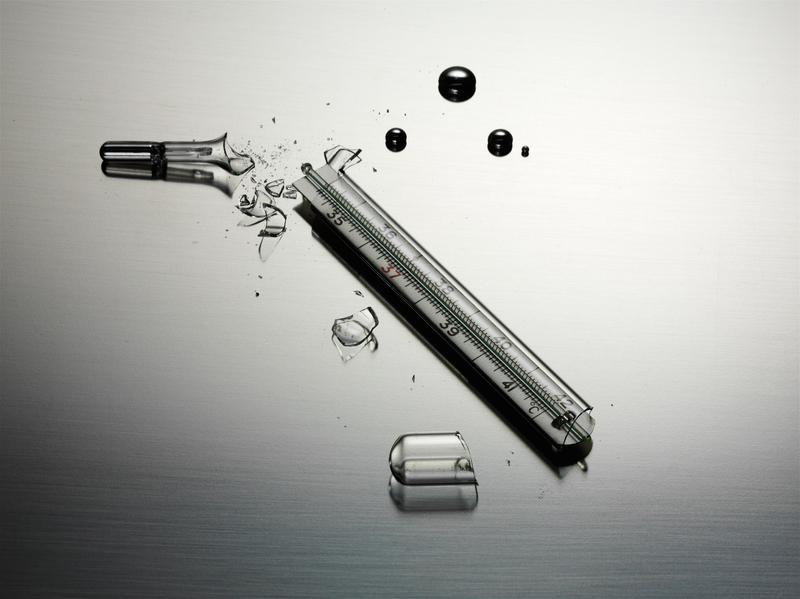Best Practices for Managing Used PPE
In today's world, proper management of used Personal Protective Equipment (PPE) is more critical than ever. The increase in use of PPE, especially during and after the COVID-19 pandemic, has brought new challenges and responsibilities for organizations, healthcare facilities, and individuals alike. This comprehensive guide will delve deep into all aspects of managing used PPE, offering expert tips, regulatory insight, environmental considerations, and practical action steps to ensure safe, effective, and compliant disposal.

Understanding the Importance of Proper PPE Disposal
Personal Protective Equipment such as masks, gloves, gowns, goggles, and face shields is designed for single use in many settings and is meant to protect people from hazardous materials, pathogens, and other dangers. Once PPE is used, it can harbor dangerous pathogens or contaminants, posing health risks to people who handle it and to the environment. Improper handling and disposal may result in:
- Cross-contamination
- Increased risk of infections to workers, cleaners, and the general public
- Environmental pollution due to non-biodegradable materials
- Regulatory penalties for non-compliance with proper waste management rules
Therefore, implementing best practices for used PPE management is essential for health safety, regulatory compliance, and environmental protection.
Regulations and Guidelines for Used PPE Management
Organizations, especially those in healthcare or industrial sectors, must comply with local, national, and sometimes international regulations regarding used PPE disposal. Some of the key regulatory bodies providing guidance include:
- U.S. Occupational Safety and Health Administration (OSHA)
- Centers for Disease Control and Prevention (CDC)
- World Health Organization (WHO)
- Environmental Protection Agency (EPA)
Each agency outlines various protocols to minimize risk and environmental impact, such as using designated bins, correct labeling, and safe transport.
The Waste Hierarchy for Used PPE
The waste management hierarchy is a useful framework for managing used PPE:
- Prevention - Minimize PPE usage where safe and possible.
- Reuse - If applicable, using reusable PPE with proper decontamination processes.
- Recycling - Where available, segregating PPE for specialized recycling streams.
- Disposal - Safe and compliant disposal as a last resort.
Best Practices for Collecting Used PPE
To ensure safe management, the collection stage of used PPE is critical. Here are essential steps to follow:
1. Designate Clearly Marked Collection Points
- Place labeled bins (preferably hands-free) at high-traffic PPE removal areas such as facility exits, changing rooms, and near workstations.
- Use sturdy, leak-proof bins with lids.
- Color coding helps workers identify PPE waste instantly--red or yellow for biohazards.
2. Train Staff on Proper Removal and Disposal
- Training sessions should cover removal ('doffing') techniques to avoid self-contamination.
- Encourage hand hygiene after handling used PPE.
- Post illustrated instruction posters near collection points.
3. Use PPE Disposal Bags
- After use, PPE should be placed directly into a lined, leak-proof, and tightly sealed bag.
- Do not overfill bags--ensure they can be closed securely.
- Regularly change disposal bags, and never manually compress them to fit more contents.
Segregation: Sorting Used PPE for Proper Disposal
Proper PPE segregation is crucial for safe disposal and potential recycling. Here's how to do it effectively:
-
Contaminated PPE:
- PPE exposed to infectious agents or hazardous chemicals must be treated as infectious or hazardous waste.
- Segregate from general waste streams and clearly mark as 'biohazard' or 'hazardous'.
-
Non-contaminated PPE:
- Items like packaging or PPE used for low-risk applications may be disposed of as general waste or recycled if material permits.
- Ensure segregation at the source remains consistent to facilitate downstream processing.
Tip: Always follow your organization's PPE waste management protocol and verify with local regulations.
Storage of Used PPE Prior to Disposal
Proper storage prior to final disposal is a key step in the process. Follow these critical guidelines:
- Store bags or bins with used PPE in a designated, restricted-access area
- Ensure the storage location is away from food preparation or public access zones
- The area must be well-ventilated and regularly sanitized
- Avoid overstocking; schedule regular pick-ups to prevent overflow
Transportation of Used PPE
Transporting used PPE requires care and compliance:
- Seal and label each bag or container properly before moving.
- Use carts or trolleys dedicated exclusively to PPE waste.
- Staff involved in transportation should wear appropriate PPE themselves and attend regular safety briefings.
- When hiring a third-party waste contractor, ensure they are licensed and familiar with PPE waste handling regulations.
Disposal Methods: Options for Used PPE
1. Incineration
- Most infectious PPE waste is best destroyed by high-temperature incineration
- Eliminates pathogens and reduces waste volume
- However, incineration must take place in licensed facilities with proper emission controls to avoid environmental harm
2. Landfill Disposal
- Non-hazardous PPE can be sent to landfills, but this is less environmentally preferable
- Ensure PPE is securely bagged to minimize the risk of littering and exposure
3. Recycling
- Specialized recycling schemes for PPE such as masks, gloves, and gowns are becoming available in some regions
- Never recycle PPE through standard municipal streams--contamination risk is high
- Check for local programs like TerraCycle that accept used PPE
4. Chemical and Autoclave Treatment
- Some facilities use autoclaves to sterilize PPE before landfill disposal
- Certain chemical treatments can decontaminate PPE but must be managed by trained experts
Environmental Considerations in Used PPE Management
With massive quantities of disposable PPE being generated globally, the environmental footprint is a major concern. Here are steps to minimize impact:
- Favor reusable PPE where practicable--such as cloth masks or washable gowns--following strict cleaning protocols
- Encourage suppliers to produce PPE from recyclable or biodegradable materials
- Participate in or advocate for local take-back or recycling initiatives
- Raise awareness among staff and users about the environmental implications of their actions
Proactive environmental stewardship is a critical aspect of modern PPE management, aligning with corporate social responsibility and sustainability goals.
Protecting Waste Handlers: Safety First
Those involved in collecting, transporting, and disposing of used PPE are at particular risk. Protect them by:
- Ensuring waste handlers are trained in PPE removal and disposal procedures
- Supplying suitable eye, face, and respiratory protection as necessary
- Providing regular health monitoring and vaccinations where indicated
- Establishing emergency protocols for exposure incidents
Record-Keeping and Documentation
Regulatory compliance and process improvement both depend on accurate waste documentation:
- Maintain records of all PPE waste collected, stored, transported, and disposed of
- Log dates, volumes, disposal methods, and waste contractor details
- Use this data to conduct regular audits and refine procedures
Training and Ongoing Communication
Success in managing used PPE relies heavily on staff knowledge and commitment. Maintain high standards by:
- Providing ongoing training refreshers for all relevant staff
- Sharing updates if protocols or regulations change
- Conducting periodic drills and supervisory checks
- Encouraging feedback to identify gaps or areas for improvement
Community and Public Health Considerations
Effective used PPE management also extends to the community. For example:
- Provide public disposal bins at sites like public transport hubs, shopping centers, and medical facilities
- Use clear signage to encourage proper PPE disposal and reduce litter
- Develop public education campaigns about the risks of improperly discarded PPE

Conclusion: A Proactive Approach to Managing Used PPE
Effective, safe, and environmentally responsible management of used Personal Protective Equipment is an essential duty for organizations and communities worldwide. By implementing these best practices for managing used PPE, you not only ensure regulatory compliance and workplace safety, but also contribute to a healthier, safer environment for all.
From training staff and segregating waste to choosing the right disposal and recycling methods, each step in the process makes a crucial difference. In a world increasingly reliant on PPE for health and safety, let's all commit to responsible and sustainable practices.
FAQs on Managing Used PPE
- What is the safest way to dispose of used PPE at home?
- Seal in a sturdy plastic bag and place in the general waste bin. Wash hands thoroughly afterwards.
- Can PPE be recycled?
- Never place used PPE in standard recycling bins. Only use dedicated PPE recycling programs if available in your area.
- How often should used PPE waste be collected?
- Daily collection is recommended in high-usage settings, or more frequently if bins are full.
- What are the risks of improper PPE disposal?
- Risks include infection spread, environmental pollution, and legal penalties for non-compliance.
Adopt the outlined best practices for responsible used PPE management and help protect yourself, your workplace, and the wider community.



